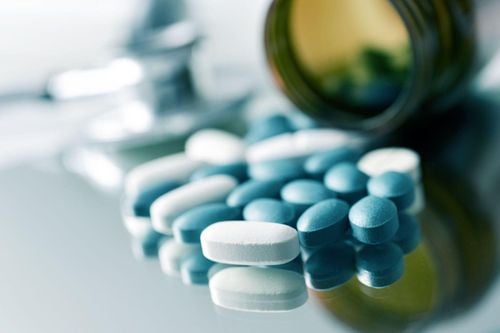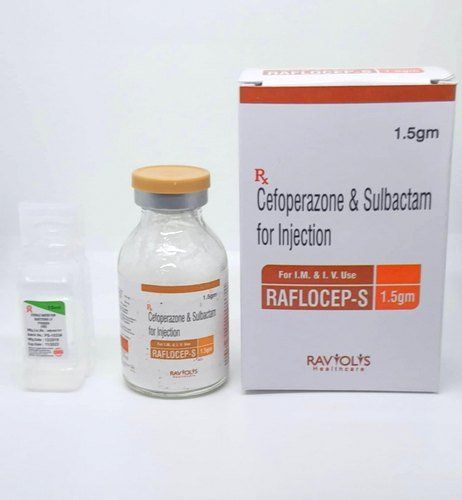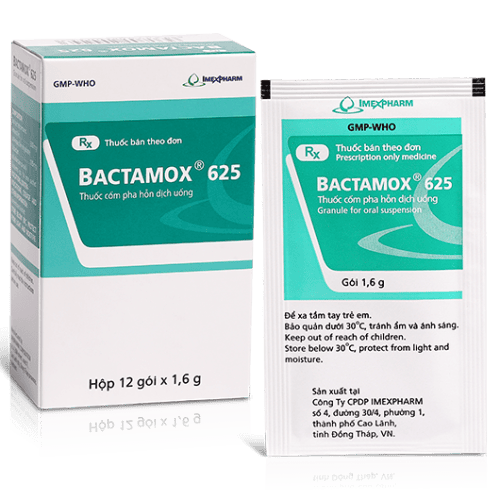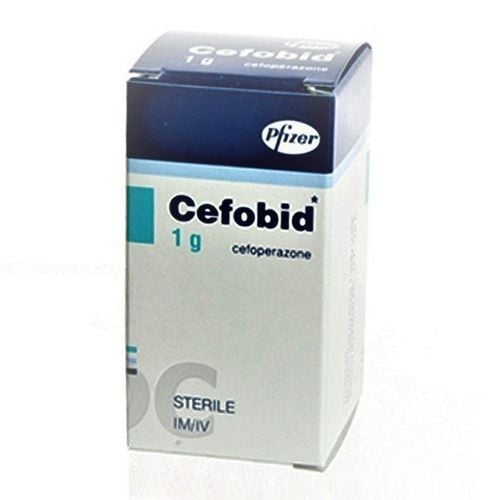This is an automatically translated article.
Sulperazone medicine has ingredients Sulbactam and cefoperazone, belonging to the group of parasites, anti-infectives, antivirals and antifungals. Sulperazone is indicated for the treatment of respiratory and urinary tract infections, peritonitis, cholecystitis...
1. Mechanism of action of the drug Sulperazone
What is Sulperazone? Sulperazone contains a synthetic antibiotic belonging to the third generation cephalosporin group and has a bactericidal effect by inhibiting the synthesis of the growing and dividing bacterial cell wall. The antibiotic in Sulperazone can be used parenterally and has the same antibacterial effect as Ceftazidim. Cefoperazone compounds in Sulperazone are quite stable against beta-lactamases formed in most gram-negative bacteria. Therefore, this compound has vascular activity and quite broad spectrum against gram-negative bacteria, including penicillinase-producing strains of N.gonorrhoeae and most strains of Citrobacter, Proteus, Morganella... Cefoperazone has anti-inflammatory effects. enterobacteriaceae is weaker than other third-generation cephalosporins. Cefoperazone compounds are often active against bacteria resistant to other beta-lactamase antibiotics.In addition, in the composition of the drug Sulperazone, there is also Sulbactam, which belongs to a group of substances with a structure similar to beta lactams but with weaker antibacterial activity. Therefore, a single dose should not be used in clinical practice. When Sulbactam binds to betalactamase, it inactivates this enzyme and protects the antibiotic with beta-lactam structure from being degraded. Therefore, it is recommended to use the combination of Sulbactam with the penicillin group to expand the spectrum of action of penicillium against bacteria that secrete beta lactamase such as enterobacteria, E. coli, staphylococcus, proteus, anaerobic bacteria...
2. Indications and contraindications of the drug Sulperazone
Sulperazone drug is indicated in the treatment of infectious diseases caused by susceptible bacteria, specifically:
Upper respiratory tract infections Lower respiratory tract infections Urinary tract infections Peritonitis, cholangitis , Cholecystitis and other intra-abdominal infections, Blood infections, Meningitis, Skin and soft tissue infections, Bone and joint infections, Pelvic infections, Endometriosis, Birth organ infections sex. Sulperazone drugs in general and Sulperazone injections in particular can be used in multi-therapy. Due to the broad antibacterial spectrum of the injection, the two components Sulbactam and cefoperazone can be used alone in Sulperazone. However, an injection of either of these two ingredients can be combined with an antibiotic when indicated. In case of using combination drug with aminoglycoside antibiotics, it is necessary to monitor the patient's renal function during the treatment period. In addition, the drug Sulperazone may be contraindicated in some cases with a history of allergy to penicillin group antibiotics, sulbactam, cefoperazone or any antibiotic of the cephalosporin group.
3. Dosage and usage of the drug Sulperazone
Sulperazone used in adults in the treatment of mild to moderate infections is usually recommended to apply a dose containing Cefoperazone from 1g to 2g every 12 hours. For severe infections, the dosage is from 2g to 4g and used every 12 hours. In children, when using Sulperazone in treatment, a dosage of 25mg to 100mg for body weight should be applied every 12 hours. In cases of renal failure, no dose reduction is required. Dosage of Sulperazone used for people with liver disease or biliary obstruction should not exceed 4 grams in 24 hours. Note: The above recommended therapeutic doses are for reference only. Therefore, before using Sulperazone for treatment, patients should be prescribed by a doctor.
In case the patient accidentally takes an overdose of Sulperazone medicine than prescribed and shows some signs of unwanted side effects, it is necessary to take the patient to the nearest emergency medical facility for assistance. timely medical assistance to help patients overcome dangerous conditions.
If the patient using Sulperazone forgets a dose, the missed dose can be used as soon as he remembers. However, if the interval between the missed dose of Sulperazone and the next dose is close, the patient can skip the missed dose and take the next dose. Patients should also note that it is not recommended to double the dose of Sulperazone, because it can cause drug overdose and unwanted side effects that affect the patient's current health.
4. Unwanted side effects and some notes when using Sulperazone drugs
Sulperazone is well tolerated when taken by mouth or by injection. Most of the unwanted side effects when using Sulperazone drugs occur in mild to moderate degree. Comparative and non-comparative clinical studies performed on 2500 patients have shown adverse effects in several systems:
The digestive system also has side effects that occur and are similar to those of antibiotics. Others cause symptoms such as diarrhea with a prevalence of about 3.9% along with nausea and vomiting of about 0.6%. The skin system is similar to that of penicillin and cephalosporin antibiotics, skin allergies with erythema accounted for 0.6%, urticaria accounted for 0.8%. The hematopoietic system may be caused by long-term drug use, causing reversible leukopenia, with positive COOmb reactions in some patients, decreased hemoglobin and red blood cells, or transient decrease in eosinophils, platelets and hypoprothrombinemia. Sulperazone should be used with caution in patients allergic to penicillin. Cases of pseudomembranous colitis have been reported with the use of cefoperazone and other broad-spectrum antibiotics. Reactions to the use of Sulperazone may be similar to those of disulfiram seen in patients who have been drinking alcohol within 27 hours.
Ingredients in the drug Sulperazone can cross the placental barrier. However, there is insufficient evidence from controlled studies in pregnant women. Therefore, in this case, it is necessary to weigh the benefits and risks of the drug before using it.
Interactions of Sulperazone drugs:
When drinking alcohol or using alcoholic beverages, it can inhibit aldehyde dehydrogenase compounds that cause accumulation in the nails, and cause a disulfiram-like reaction with hot flashes, vomiting. sweating, headache, fast heartbeat. Aminoglycoside antibiotics should not be mixed with the ingredients of Sulperazone, because it will reduce the activity of the drug and there is a physical incompatibility between these mixed components. When using Sulperazone, caution should be exercised if it is combined with anticoagulants, thrombolytics or non-steroidal anti-inflammatory drugs. Because when combined can occur easy bleeding. Sulperazone should not be mixed with amikacin, gentamicin, kanamycin B, ... to avoid precipitation. If Sulperazone is mixed with hydrazinyl dihydrochloride, aminophylin, aprotinin, .., after 6 hours, the drug's properties may change. Interactions of Sulperazone with clinical tests showing a urine glucose response may be falsely positive with benedict or fehling solution, or positive in antiglobulin tests. Even Sulperazone can increase serum ALP, AST, ALT, BUN and serum creatinine. Sulperazone medicine contains Sulbactam and cefoperazone ingredients, belonging to the group of parasites, anti-infectives, antivirals and antifungals. Sulperazone is indicated for the treatment of respiratory tract infections, urinary tract infections, peritonitis, cholecystitis... To ensure effective treatment and avoid unwanted side effects, patients need Follow the instructions of your doctor or pharmacist exactly.
Follow Vinmec International General Hospital website to get more health, nutrition and beauty information to protect the health of yourself and your loved ones in your family.
Please dial HOTLINE for more information or register for an appointment HERE. Download MyVinmec app to make appointments faster and to manage your bookings easily.













